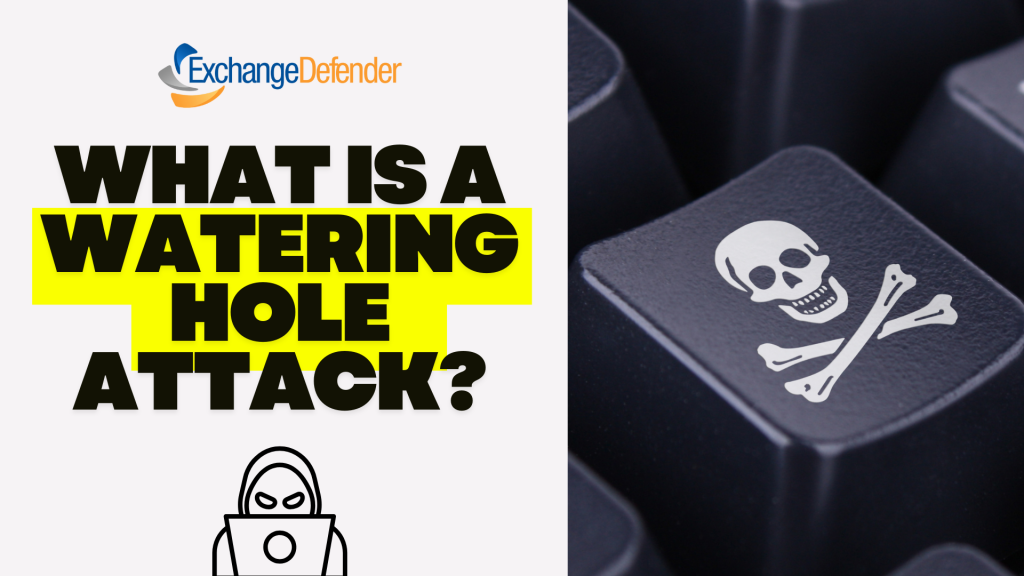Browse Online Like a Boss: Our Cybersecurity Experts Share Top Tips

Phishing scams and malware lurk everywhere online, even in emails. But fear not! Here at ExchangeDefender, our cybersecurity experts have compiled their best practices to keep you safe while browsing from email links:
1. Check Before You Click:
Hover over the link to see the actual URL. Does it match the text displayed? Mismatched text is a red flag!
2. Know the Sender:
Don’t click links from unknown senders. If it’s from someone you don’t recognize, contact the sender directly to confirm the email’s legitimacy.
3. Look Out for Lookalikes:
Be wary of emails with seemingly familiar sender addresses. Typos or slight variations can indicate a spoofing attempt.
4. Beware of Urgency:
Phishing emails often pressure you to act quickly. Take a breath, verify the sender, and don’t be afraid to delete suspicious emails.
5. When in Doubt, Throw it Out:
If you’re unsure about a link, err on the side of caution and delete the email. It’s better to be safe than sorry!
BONUS TIP: Enable strong spam filtering – tools like ExchangeDefender can significantly reduce phishing attempts reaching your inbox.
Improved SPAM Release Security: Quick Release

ExchangeDefender is giving users more power to lock down their valuable data. Now that ExchangeDefender handles business continuity and backups for M365/Gmail tenants there is even more information in ExchangeDefender that demands more flexibility with security policies. First, let’s talk about the upcoming feature that allows you to lock down your ExchangeDefender SPAM Quarantine Report activity.
Bit of background: ExchangeDefender Quarantine Reports are an immensely popular ExchangeDefender feature (coming up for an upgrade this spring btw!) that sends users a list of quarantined messages with a set schedule. Users tend to rarely look in Junk Items or review SPAM unless they are waiting for something so this is a cool feature that our users just love. Scroll down the list of quarantined messages and release or trust just by tapping the link. Super convenient, but does it meet your security requirements?

ExchangeDefender Quick Release feature now enables you to choose between convenience and a more secure release process. For many organizations, having the message released or get added to trusted senders with just a click is a huge time saver and user convenience. But if your Microsoft M365 / Gmail account gets compromised (which happens ALL the time) or you deploy a new security/business/CRM (mostly AI stuff) that scans links then this “convenience” can turn into an Inbox packed with SPAM messages that some hacker/service inadvertently released.
If this happens to you, know that ExchangeDefender can help with the “Secure Release” setting. By enforcing Secure Release, when the user clicks to release or trust a message they will be prompted to authenticate before they can release/trust the message. This way if you get hacked or install link scanning/crawling software in your tenant will not be able to access the messages without a password.
Now please, go setup your favorite authenticator app with ExchangeDefender MFA (next up, you can set it to be mandatory/required)
NEW: ExchangeDefender SPAM Manager Desktop App
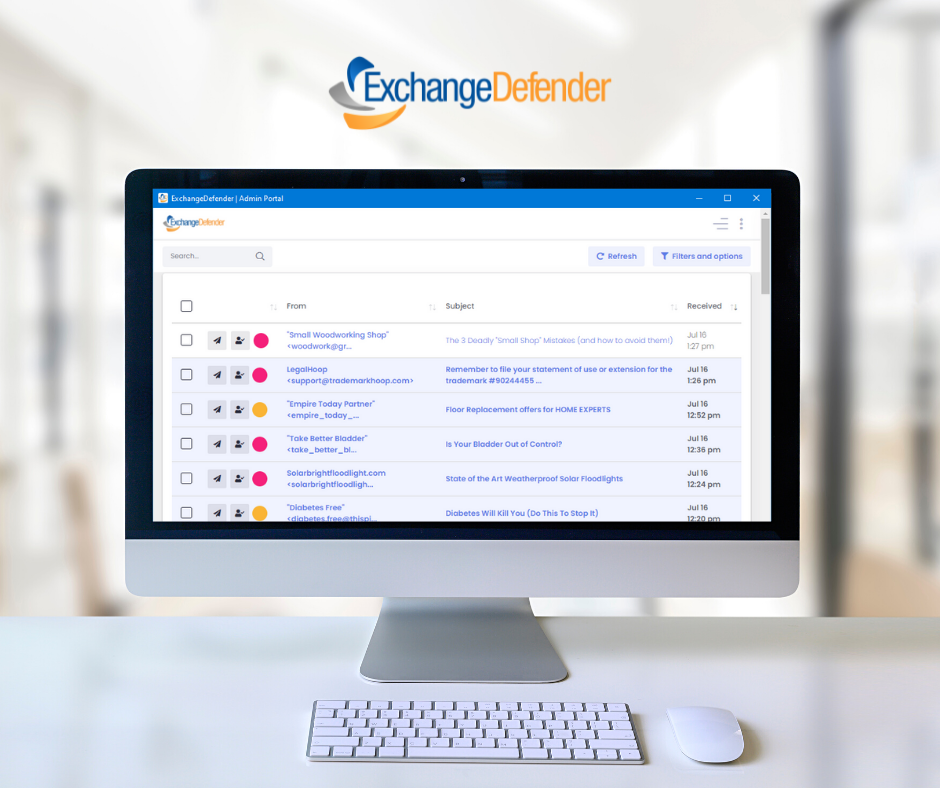
We have been working on something cool based on the feedback from our clients. It’s a multi-platform app (Windows, Mac, Linux) that reminds you to check your SPAM, and when you do the message is just one click away – making it just as productive as Outlook & Outlook Web App.
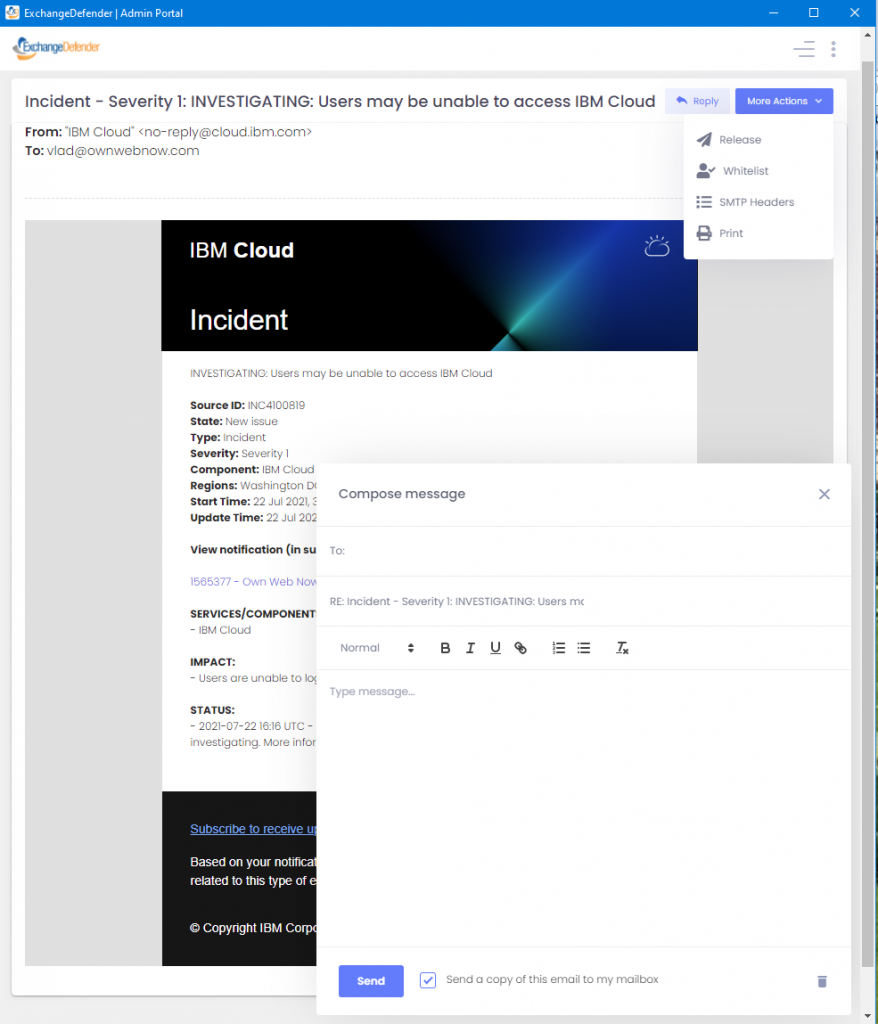
It’s also a lot more secure.
Our portal remains the #1 way clients interact with ExchangeDefender at https://admin.exchangedefender.com. Most people already have it bookmarked. But for those that need a little extra push, a reminder (every 5/15/30/60 minutes) that there is SPAM waiting, a desktop notification, a secure way to access, read/reply/forward/delete the message – for you we have the ExchangeDefender SPAM Manager app:
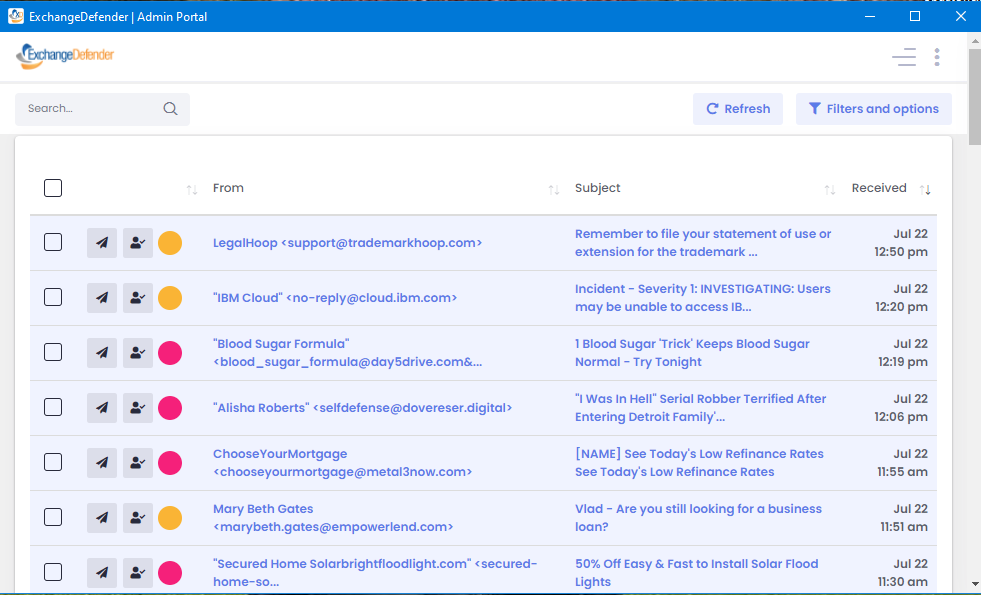
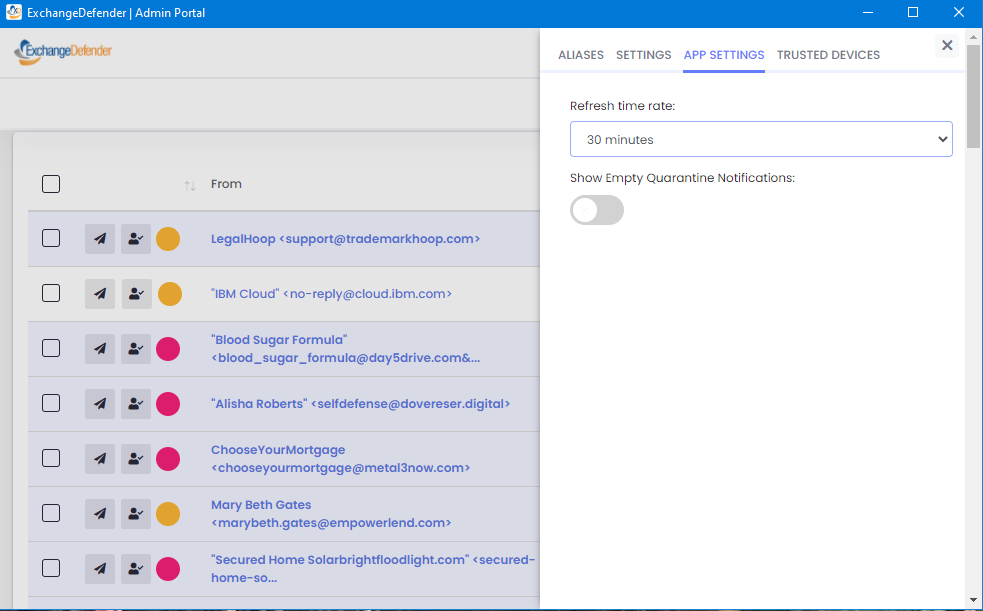
If you have users relying on the legacy ExchangeDefender Quarantine Email Reports, this is it’s new secure version.
We are currently wrapping up beta testing the app across all three platforms, if you’d like to take a look please open a ticket at https://support.exchangedefender.com and we’ll send you the link!
New look for ExchangeDefender SPAM Release & Re-directions
It’s been about a decade since our last face-lift to the end-user facing part of ExchangeDefender – suffice to say, lot’s of cool new things are possible with the web technology that wasn’t possible in the past. So, allow me to introduce you to the ExchangeDefender Security Center!
As of Thursday, June 27th, when you attempt to release a SPAM message,
you will see our new security center:
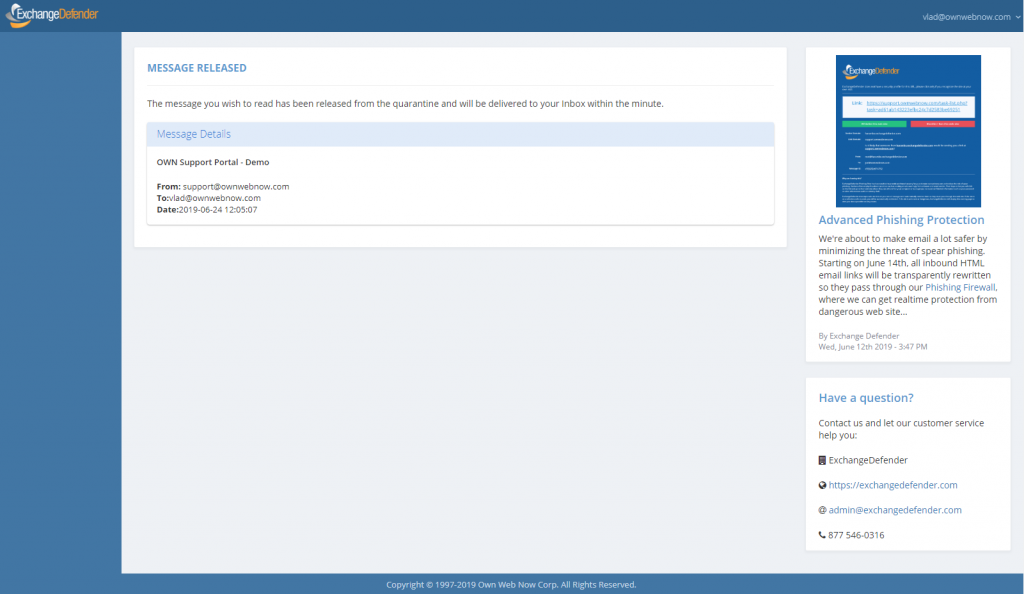
Of course, yours will look a little different. If you have ExchangeDefender from a service provider, it may have their color scheme. You can still upload your own logo (at https://admin.exchangedefender.com).
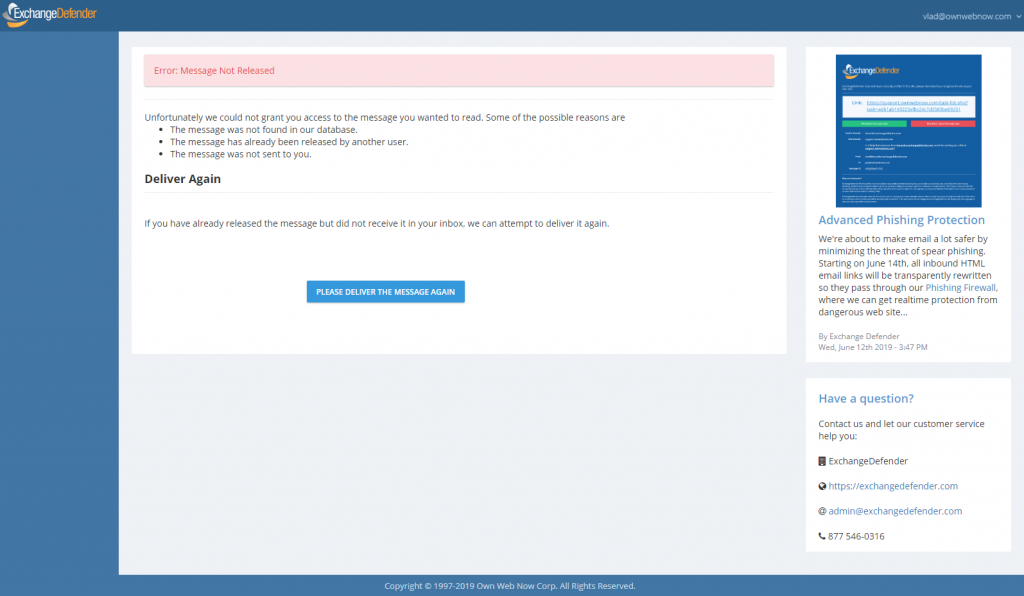
The idea here is to help connect our self-service portals https://www.exchangedefender.com/ss, our chat, our alerts, and documentation into one spot so when an issue comes up we can help the end user right then and there.
Remember that all of this stuff is data driven, so if you’re one of our partners we encourage you to put up your own announcements, deploy the XD NOC for your organization so your branding is preserved, work with our account managers, etc.
Going forward, this will be the default view for unauthenticated connections – so WFS, Encryption Download, SPAM release, and the Phishing Firewall Redirect.
P.S. How do IP restrictions play into this? They don’t. If you have ExchangeDefender enabled only for Trusted Devices and admin portal locked down to the enterprise IP range, the site will still allow the user to release SPAM from the quarantine no matter where they are (think mobile device access). For other functionality, once they click on Login the same 2FA/OTP/Known Device/IP Restrictions are in play.
New ExchangeDefender AntiSPAM Engine

The more SPAM stays the same, the more ways they find to get it through to your mailbox.
How we determine something to be SPAM vs legitimate mail is a bit of a science and it incorporates a ton of statistical analysis, data feeds, real-time blacklists, IP reputation scores, several antivirus products, several malware detection products, subscription services, etc. We pass each inbound message through almost all of these subsystems and assign it a score – as that score adds up the message becomes categorized as SPAM or SureSPAM based on the amount of UCE/malware/infected content the message has.
Every year we rebuild the ExchangeDefender engine to pull out things that no longer perform well, add new promising technologies, shift around the different plugins and so on. While ExchangeDefender filtering is updated in real-time and by tons of different vendors along with our in house technology, major improvements and technology shifts are necessary in order to prevent truly dangerous stuff from getting through. Unfortunately, this means that for about a week or two the amount of junk mail that gets through goes up as we reset all our scores, statistical models, weighs for different services and the implementation. While we wish we could just point and click, the process is far more complex than that, and requires delicate changes over a few days.
We appreciate your patience with us as we get the new engine online. The SPAM filtering levels should return to 100% shortly and we realize SPAM is annoying – which is why we’re doing this in the first place. Thank you for your business and trusting us with your email, we look forward to getting our best ever SPAM detection online shortly.




